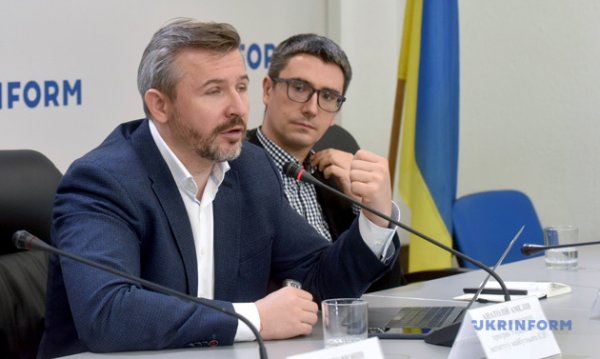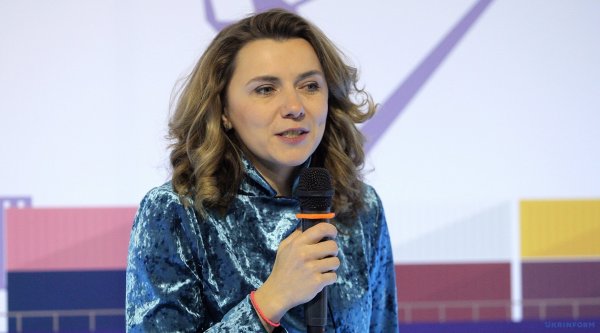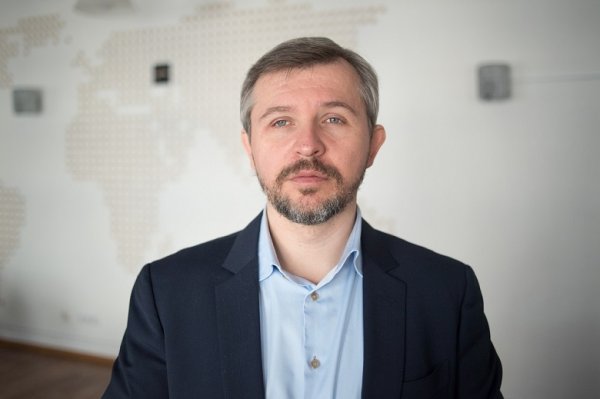
Expected GDP growth by the end of the year by more than 5% is the result of the adaptive capabilities of the state and business
Throughout 2023, domestic experts and analysts from international financial institutions – in particular, the World Bank and the IMF – revised forecasts for the development of the Ukrainian economy several times, changing them for the better. While, for example, the International Monetary Fund's April World Economic Outlook projected a 3% drop in our GDP, the recent decision by the Fund's Board of Directors to revise the EFF program for the second time is based on a forecast of economic growth of 4.5%. The inflation rate, according to preliminary calculations, should have exceeded 21%, but according to new estimates, it will be only 6%. The situation on the foreign exchange market, the volume of international reserves and other indicators are relatively stable, which indicates the preservation of macro-financial stability.
But there are also a number of “buts”, the key ones being the low comparative base last year, when economic processes in the country practically stopped for several months, as well as the critical dependence of most of our non-military expenses on external assistance. And most importantly: the risks associated with a possible escalation at the front remain too high – a factor that at any moment can undermine fragile economic stability.
ECONOMY IN THE EYES OF EXPERTS: ABOUT THE REAL CONDITION WITHOUT DECORATIONS
The factors that most influenced the rather optimistic (as in times of timelessness) end of 2023 are actively discussed by financiers, economists, politicians, business representatives, the media and the public at the end of the year on numerous discussion platforms. One of these discussions was hosted by the Center for Economic Renewal. Within its framework, CEV analysts, in particular, presented the study “Ukrainian Economy: Results for 2023 and Forecasts for 2024.”
As the head of the Center, Kirill Krivolap , noted during the presentation, an important incentive for economic renewal was the intensification of restoration processes and business activity in the territories liberated from the enemy. In some places – for example, in the Kiev region, Chernihiv region and Sumy region – these processes gained momentum last year, which led to positive changes throughout 2023. Somewhere, as in Nikolaev, Kherson and Kharkov, the first steps towards post-cupation recovery were taken only this year.

Kirill Krivolap
At the same time, the situation in the lands liberated from the aggressor is heterogeneous: it remains extremely complex and unpredictable in the front-line regions of the Kharkov and Kherson regions, as well as in the north of the Chernigov and Sumy regions, where shelling and incursions by armed forces “from behind the rib” do not stop.
The latter, together with a reduction in consumption (millions of Ukrainians still remain abroad), insufficient export volumes (due to logistics, production and other problems) and a virtual lack of investment, has a greater impact on the economic situation in our country. It should also be taken into account that 27% of Ukrainian mineral resources – in particular, coal and oil – remain in temporarily occupied territories and are now simply stolen by the enemy.
The situation in the energy sector remained difficult throughout the year. The enemy damaged more than 60% of Ukraine's energy capacity. This percentage is even higher in the coal generation segment. In fact, the aggressor attacked each thermal power plant several times with missiles and drones, and in the front-line areas fired at point-blank range with MLRS and artillery. Ukraine has also lost access to most of the solar and wind generation capacities, concentrated precisely in the territories now held by the enemy.
Among the positives, according to the conclusions of the study’s authors, is the gradual restoration of export volumes by sea, which actually stopped after Russia’s withdrawal from the “grain agreement.” More than 100 ships have recently taken agricultural raw materials and other goods abroad through the humanitarian corridor established by Ukraine.
“In fact, Ukraine coped with the challenges this year probably better than could have been expected, at least in terms of economic performance. More than 5% economic growth, which seems to be expected by the end of 2023, taking into account all external factors, is very good. First of all, what adds optimism is that Ukraine managed to establish supplies through southern ports without the participation of intermediaries. The dynamics of exports are very good, and this, in fact, gives reason to hope for the best,” agreed senior economist at the Center for Economic Strategy Yuri Gaidai .
He also noted the coordinated work of Ukrainian energy workers, thanks to whose efforts, this year, despite Moscow’s hopes, large-scale blackouts were avoided. Indeed, at the beginning of the year, many predicted systemic failures in the operation of Ukrainian energy networks. We managed to get through the beginning of the current heating season relatively stably – also thanks to the involvement of emergency assistance from European partners during peak consumption hours. Although, of course, there are still many challenges ahead, because the aggressor has not abandoned his intentions to free Ukrainians from light and warmth.

Yuri Gaidai
Separately, Gaidai noted the role that international financial assistance played in ensuring economic stability in Ukraine.
“Since we rely about 40 percent on external assistance, probably at least 40 percent of our relative economic success depends on this support. The nearly $40 billion that entered the Ukrainian economy this year is an unprecedented fiscal stimulus. For example, I saw recent data on real retail sales volumes – they now reach 92% of the pre-war level. And this is taking into account inflation and a decrease in the number of consumers, since millions of people left Ukraine due to the war and taking into account the actual economic losses. This is amazing. All this is the consequence of such fiscal stimulation, when the state pours much more resources into the economy than it withdraws,” the economist explained.
At the same time, we should not forget about the other “side of the coin”: now we consume much more than the domestic economy actually allows. Which can simultaneously be an incentive for local business and provoke an increase in consumer imports. And the latter is already a definite threat to macrostability.
In addition to the flow of international financial assistance, the balancing of the situation on the foreign exchange and consumer markets of Ukraine this year was partly facilitated by the fairly high level of remittances from our employees. Advanter Group founder Andrei Dligach recalled that they had already transferred $12 billion to families. This is less than the pre-war $16 billion, but quite a significant figure. According to the economist, we are talking about a positive impact on the economy and the foreign exchange market, and about hope for the future.

Andrey Dligach
“This means that ties with Ukraine are not interrupted. Because the key risk is that this money could migrate and accumulate somewhere outside the country. At the same time, according to estimates, in total for 2022-23 we lost 12% of businesses due to relocation outside of Ukraine. We are talking about 35 thousand enterprises in Poland, Germany, the Czech Republic and other countries. I mean not only physical relocation, but also the opening of new businesses by Ukrainians in another place. I think this is a very high figure. Although the emergence of “mirror” businesses, when investments go directly into a chain in which Ukraine is also involved, is a positive trend that arose in 2023,” the economist added .
According to him, among other things, it is encouraging that foreigners have begun to invest in Ukraine, in particular, in the construction of factories, other production facilities and trading platforms. At the same time, he considers Ukraine the most undervalued economy, because anyone who invests in it now will be able to very easily double or triple its capitalization after the Ukrainian Victory.
“It is important that foreign investors have “found” the logic: invest money because it’s cheaper now, if you’re afraid to give money – give equipment, if you don’t risk giving equipment – offer markets. This logic is gradually gaining the upper hand, which opens up good opportunities for investments to come to Ukraine next year – even if military risks remain,” Dligach is convinced.
Anatoly Amelin, co-founder of the Ukrainian Institute of the Future, also spoke about positive signals from the investment field. In this regard, he mentioned the gradual return of international retailers to Ukraine, announced infrastructure projects, in particular, the construction of the country’s largest wind farm, as well as plans to manufacture the famous “Bairactors” in our country.
“Yes, for now – these are announcements. But such plans indicate confidence in the Ukrainian economy. We talked with several American billionaires, and for me this is a very good sign that they are interested in Ukraine. We talked about the Ukrainian economy and our capabilities. And I made sure that they understand well how the processes will develop, they understand that they need to buy something or start projects here now. Therefore, the good news is that their expectations are positive. It is also noticeable that Ukrainian cities – even those that suffered greatly from the aggressor – Zhitomir, Odessa – are thinking about their investment attractiveness and developing a favorable business environment,” the economist emphasized.

Anatoly Amelin
As another positive example, he cited the work of the state company Ukrnafta, which demonstrates good profitability.
“We remember that they were never profitable. Now the situation has changed dramatically. And this is an example of how effective state-owned companies can operate. This is also a signal for our partners,” Amelin is convinced.
Another participant in the discussion, an expert on strategic transformations, member of the Supervisory Board of Ukrhydroenergo Natalya Nikolskaya , considers her main discovery of 2023 to be the unprecedented stability of Ukrainian business, which, despite everything, continues to produce and export goods, pay salaries and taxes.

Natalia Nikolskaya
“This is an important point that we need to talk about. And this is something that the government must take into account. After all, we need Ukrainian business to continue to operate. Because this is a matter of creating gross domestic product. Despite all the problems with logistics, which, by the way, are slowing down the resumption of export volumes, we understand this very well. Blocking the movement of Ukrainian carriers on the western borders – in Poland, Slovakia and Hungary – does not contribute to this in any way, but it also interferes with the import of materials and components that are critical for us,” Nikolskaya added .
“The first conclusion, which, in my opinion, characterizes the state of the Ukrainian economy, consists of two words: sustainability and adaptation. That is, business has demonstrated sustainability, the nation has demonstrated sustainability, and the Ukrainian community is united. We must win this war, for which we must support our armed forces and move our economy forward. And we see that indeed, small, medium and large businesses, despite such an unprecedented situation, despite such a new “normal,” demonstrate resilience through adaptation. Business is beginning to adapt to new logistics, unusual production conditions, and attracting labor,” added Dmitry Livch, head of the EasyBusiness State Organization and the analytical department of the Center for Economic Recovery, during the discussion.
He also drew attention to the fact that, along with all the disasters that the war brought to Ukrainians, it contributes to a certain equalization of economic opportunities in different regions of the country. This is happening due to the fact that businesses are relocating; there are a large number of internally displaced persons who were forced to move from eastern and southern Ukraine closer to the center and west. They create new enterprises and create added value in a new location.

Dmitry Livch
“Accordingly, the economy is beginning to be more balanced due to an improvement in the pre-war regional disparity index, when the 20% of regions with the highest GDP per capita were 2.7 times higher than the 20 regions with the lowest GDP by this indicator. Now the situation is leveling out: the western and central regions, which are considered safer both for attracting investments and for conducting economic activities, are beginning to develop rapidly,” the expert explained.
ECONOMY THROUGH THE EYES OF EXPERTS: Frankly about the shortcomings
According to Anatoly Amelin , the Ukrainian economy is very dependent on news – primarily on reports from the front. And this, among other things, has a great impact on business investment decisions. Unfortunately, given the overly optimistic expectations for 2023 after the success of the Ukrainian defenders, people are now very disappointed. Hence, there is a slight deterioration in sentiment in the business environment.

Anatoly Amelin
“But I believe that any crisis is not only problems, but also opportunities for change. And, for example, there may not be a better time to start the “10-10-10” tax reform than now. Because the possibilities of getting money into the budget are now already limited. If reforms are launched during this period, the losses will not be as noticeable as in stable economic times. But business will get rid of pressure from the authorities and control bodies. I don’t insist that the reform should have been launched in 2023, but in my opinion, we should already make a fundamental decision, approve the law, and start a discussion,” the economist believes.
He calls the key flaw that the wartime economy has not yet started working in Ukraine.
“Russia militarized its economy back in 2022. I'm not talking about the “militarization” of our economy. Militarization and “wartime economics” are slightly different processes. But, unfortunately, we have not set our economy up for victory,” Amelin regretted. “We also do not have a positive effect in the form of writing off state debts. When I studied countries where military conflicts took place, I found that almost all of them had very good opportunities for debt relief. I understand that the country is currently negotiating and continues to receive international assistance. But at the same time, few people talk about writing off debt. After all, no matter how favorable the terms of current loans may be, we must pay them back at some point.”
Therefore, Amelin believes that in Ukraine it is time to at least start a discussion about how we plan to repay the borrowed money. Obviously, in order to service the debt in the future, they must take one of two paths: either increase the tax burden, which, according to the expert, makes no sense, because business will again en masse return “to the shadows,” or choose the path of negotiations with creditors on write-off at least part of the loans taken.
Natalya Nikolskaya named one of the shortcomings of 2023 as the fact that insurance schemes for domestic and foreign investments are not yet fully operational in Ukraine.
“Among the reasons are problems in cooperation with international financial institutions. And I’m not sure that this is the fault of the Ukrainian government. It’s more about the rather slow movement and bureaucratic nature of financial organizations that are trying to impose their standard schemes on the situation in Ukraine, while the situation in which our country finds itself is far from any “standards,” the expert believes.
According to her, the interest of investors and the impetus for investing in projects in Ukraine could be facilitated by direct contributions from international financial organizations – the EBRD, the EIB, the European Investment Fund and the like.
“We understand that one dollar or euro invested by these organizations now as an investment in Ukraine could potentially pave the way for private capital investment in the amount of 5 to 10 dollars or euros. Any foreign investment that will come to the country will stabilize our economy and foreign exchange balance. And for me the unpleasant discovery was that
international financial institutions are not very active in this direction,” summed up Nikolskaya.
But first of all, we ourselves must change. Noting that the current disaster, by the way, gives Ukraine a chance to accelerate economic development with the start of a large-scale recovery, Andriy Dligach recalls the “national habit” of wasting such opportunities.
“We usually eat up all the sprouts of economic growth. Remember, this was the case in 2001-2007 when we converted growth into imports of cars, clothes, gadgets and other non-critical goods. This was the case later, as soon as the economic recovery began. As sad as it is, something similar is happening now. Although not on such a scale: despite the fact that the number of imported cars has increased, the import of clothing is intensifying, “consumerism” has not yet fully returned. I would like to warn against its return in the future,” the economist emphasized.
And for this it is not necessary to artificially limit the consumption of imported goods by Ukrainians. It is important to change the balance in favor of exports. It is necessary to look for opportunities to sell value-added goods abroad, which, by the way, will require lower logistics costs than transporting millions of tons of raw materials.
Another shortcoming, according to Dligach, is the lack of a comprehensive economic development strategy, the need for which has been talked about in Ukraine for several years now.
“And in the absence of a strategy, it is difficult to predict anything realistically. It is not the one who “understands the topic” who should make forecasts, but only the manager. If we do not control the development of events, then we are unlikely to be able to accurately predict anything,” the economist believes. As an example, he cited the upcoming elections in the United States, which were discussed a lot in Ukraine this year, but which Ukraine really cannot influence the course of.
At the same time, the country is capable, even in conditions of military uncertainty, of taking extraordinary steps that will help accelerate the pace of economic development above the 5% threshold and at least achieve 7-10% of annual post-war GDP growth. The vision of such steps expressed by experts both during the mentioned discussion and at other discussion platforms can be found in one of the following Ukrinform materials, which we are already preparing for you.
Vladislav Obukh , Kiev
